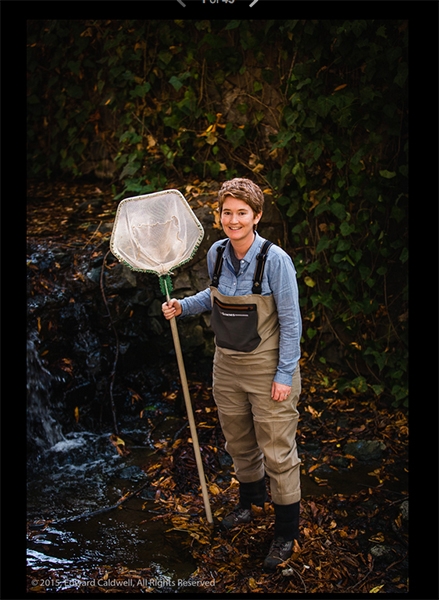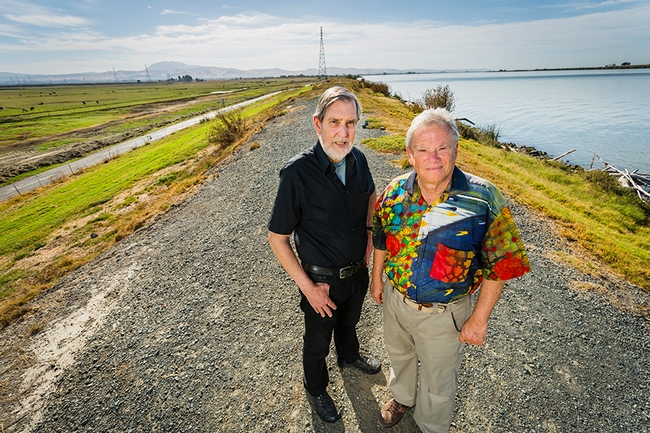California’s delta: On the front lines of the state’s water issues
California water: Few natural resources are as impressive, or as imperiled. Whether it's supplying 40 million domestic users, cooling the server farms of Silicon Valley, or irrigating the actual farms that supply half of the nation's produce, the importance of the state's aquifers and headwaters cannot be overstated. (Lake Tahoe, Yosemite Falls, and white-water rafting on the Kern and American Rivers feel like an embarrassment of riches.) While the potential for a multi-decade drought has grabbed headlines, however, California's water supply faces assault from a host of lesser-known factors including infrastructure failure, pollution, habitat loss, and plain old political chaos. This issue is strongly interdisciplinary, so it's only natural that UC Berkeley College of Natural Resources professors and students have been at the forefront of analyzing the problems and beginning the search for solutions. Several Berkeley professors have even served on the Delta Independent Science Board (DISB), a group of experts appointed by the state to oversee the quality of scientific research on California's contentious delta water issues.
Supply vs. demand
“Issue number one, one, and one is that a substantial portion of the acreage in agriculture is supported through groundwater overdraft, even in normal-rainfall years,” he says.
According to the U.S. Geological Survey, California's cities, factories, and farms soak up about 38 billion gallons every day. And while most people think of water in terms of rivers, lakes, and rain, over a third of the state's supply comes from aquifers deep underground. Only one in six Californians relies on groundwater alone to supply their domestic needs.
“We've been mining water to expand use beyond surface-water allocations,” says Norgaard. “Groundwater is close to gone, and agriculture is saying, ‘Where's our water, where's our water, where's our water?'”
Given that much of California is a desert — and that decades-long droughts are not impossible — intelligently managing California's limited supply is crucial. Gov. Jerry Brown recently ordered municipalities to cut home water usage by a whopping 25 percent, and California residents gave themselves a well-deserved pat on the back when usage for July 2015 surpassed that target by 6 percent. But there's one problem: Domestic use accounts for only 10 percent of California's total water consumption. Agricultural use, on the other hand, accounts for closer to 40 percent.
At first glance, that doesn't seem entirely inappropriate. Fruits, vegetables, and nuts, not to mention Northern California's incomparable wine and cheese — why shouldn't the farmers who feed half of the nation take half of the water that the state has to offer?
“Do you know what percent of the state's economy is agriculture?” asks Vincent Resh, a professor in the Department of Environmental Science, Policy, and Management (ESPM) and another DISB member. “Less than 2 percent.” It's a very vocal 2 percent, though, and there are volumes of case law — and a good amount of political muscle — dedicated to maintaining the status quo. “I'm very sympathetic toward the plight of farmers in the delta,” Resh continues. And farmworkers are the poorest of California's poor, with seasonal unemployment rates reaching upwards of 60 percent. “It's the human side of the story that I've become extremely sensitive about.”
Nonetheless, Resh recalls being on a delta tour that was packed with people who identified themselves as delta farmers.
“They were all talking about how this has been their family heritage for generations, but they were working as lawyers and bankers," Resh said. "They were really talking about a way of life that was long gone for them personally, but a memory that they were holding on to. Actually, this ‘way of life' idea is true of many of the contentious water issues in California. The controversies over who gets the water in the Klamath River in Northern California and Oregon are as much about way of life as they are about water for agriculture and salmon.”
A fragile water system
Nobody is suggesting an outright end to farming in California, but it's becoming increasingly clear that change is coming. One looming problem is the fragility of the levee system. Drive around Sacramento's rural environs and you'll realize that a lot of farmers actually do their work below sea level, with nothing but a hodgepodge system of peat dams and concrete rubble to restrain the brackish delta waters. Overactive beavers, like the one on the Jones Tract, are the least of the problem.
Like everyone else in California, the engineers who watch over the delta's levee system are at the mercy of probability, breathing a sigh of relief every day that goes by without the catastrophic shaking of the Big One.
“In any given year, there's not a large chance of a huge earthquake,” says David Sunding, UC Agriculture and Natural Resources Cooperative Extension specialist and chair of the UC Berkeley Department of Agricultural and Resource Economics. “But those risks accumulate over time. And by the time you look two decades into the future, there's a two-thirds chance of a very large quake that will affect the delta's water system.”
Even an apparent bounty — consecutive years of high rainfall — poses risks. River flows would rise along with reservoir levels, placing added stress on levees so that even a minor structural failure could set off a chain reaction, flooding fields and devastating crops.
“The current proposals for achieving reliable water supply and ecosystem health may be controversial, but it's clear that something has to be done — we can't have the status quo.”
— Vincent Resh
Inherent in either of these scenarios is the threat to drinking water. The delta houses the State Water Project, two massive pumps that send water to Southern California. If the levees are overtopped, the salt water of the bay will infiltrate the Sacramento and San Joaquin rivers, rendering the supply undrinkable.
“The worst-case scenario is three months without water,” Resh said. “And that's from Fremont down. Silicon Valley, Los Angeles, everything.”
Not just a human problem
Of course, farmers and thirsty urbanites aren't the only ones who need water. According to Berkeley Environmental Science, Policy, and Management associate professor Stephanie Carlson, “many of California's native fishes are declining, and the causes are rooted in habitat loss and the introduction of non-native fishes into California's waterways.” She emphasizes that our current multiyear drought may be the “nail in the coffin” for those populations already facing extinction.
Carlson's research focuses on understanding where and why fish populations are persisting. She found that several native fish, including commercially harvested salmon, live in “intermittent streams” — waterways that flow continuously in the wintertime but break into isolated pools during periods of low rainfall. As drought or human usage reduces stream flow, water quality deteriorates, resulting in higher temperatures and less oxygen. In pools that dry up completely, all fish die, of course, but some “refuge” pools persist through the summer — and these habitats do support fish.
Carlson's team has found that “the survival of imperiled salmon and trout varies among summers, but is highest after wet winters.” Following wet winters, streams flow longer into the summer, more pools persist, and water quality is improved. But, interestingly, “almost regardless of winter rainfall, most fish mortality is concentrated in late summer,” meaning that early, abundant fall rains may be as important as the previous winter's storms.
Carlson believes that these findings should guide management. Urban development in the Bay Area is spreading from flatlands to the hills.
“We need to focus our conservation efforts in those upper headwater streams — many of which are intermittent,” she says. Carlson also stresses that native fish have adapted to the seasonal shift from flowing streams to standing pools, while non-native fish have not — thus intermittent headwater streams may be important refuges for native fishes.
While diverting less water from streams during summer might help juvenile salmon, managing outcomes in the ocean is far more difficult. In 2007 and 2008, the West Coast Chinook salmon population collapsed, with the Sacramento River fall run reduced by 90 percent. Fisheries closed at a cost of millions of dollars, and the federal government declared a disaster. While the crisis was attributed to low ocean productivity beyond human control, human degradation of freshwater salmon habitats worsened the impact of poor ocean conditions.
Most salmon-breeding habitats in the Central Valley lie upstream of dams. Today, most Central Valley salmon are born in hatcheries; many circumnavigate the delta in trucks and are released into the San Francisco Bay. Because these fish don't swim through their natal rivers and the delta, they have no way to retrace their paths as adults. So they go everywhere, mingling with the broader gene pool. This “straying” erodes genetic differences among populations and increases the risk of collapse. It's possible that a more vibrant, genetically diverse salmon population could have better resisted the environmental disturbances of the mid-2000s.
“It's like having a broad portfolio of financial investments, as we've been taught with our 401(k)s,” Carlson says. “Maintaining multiple distinct populations with diverse traits and dynamics provides insurance against environmental change.”
—Excerpted from an article in the winter 2016 issue of Breakthroughs Magazine. Read the complete article.




Posted by Chris Parsonson on February 27, 2016 at 3:43 AM